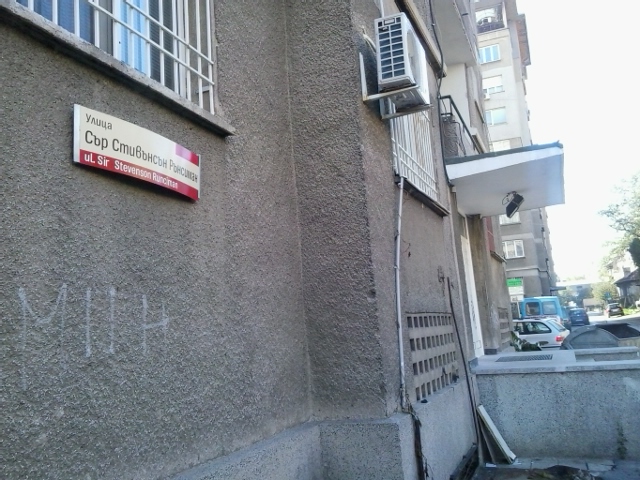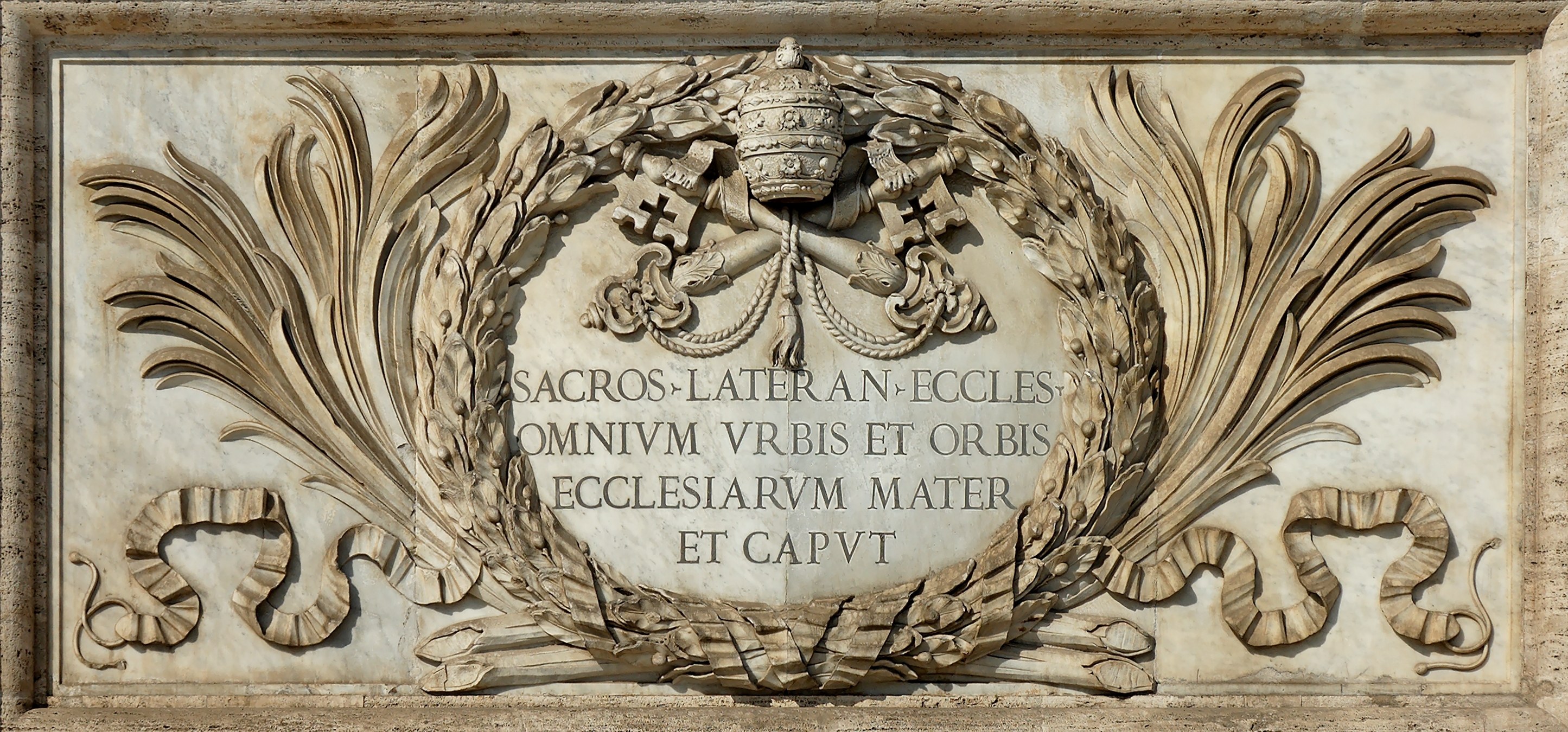|
Gerardo Bianchi
Gerardo Bianchi (1220/1225 – March 1, 1302), also known as Gerardo da Parma or Gerard of Parma, was an Italian churchman and papal diplomat, an important figure of the War of the Sicilian Vespers. Life Gerardo was born in Gainago, in the diocese of Parma, studied law at the University of Bologna, and became canon of the cathedral chapter of Parma. He began his career in the Roman Curia as a chaplain of Pope Innocent IV (1243-1254) and ''scriptor'' in the chancellery (attested in 1245). He is attested as ''litterarum apostolicarum contradictorum Auditor'' (Auditor of the Rota) on April 30, 1277. At the time of his elevation to the Cardinalate he was a ''Protonotarius apostolicus''. Pope Nicholas III in the Consistory of March 12, 1278, created nine cardinals, among them Gerardo Bianchi, whom he named Cardinal Priest of SS. XII Apostoli. On July 15, 1278 Pope Nicholas notified King Philip III of France that he was sending Cardinal Gerardo to Toulouse, where he would join with ... [...More Info...] [...Related Items...] OR: [Wikipedia] [Google] [Baidu] |
Mary Of Hungary, Queen Of Naples
Mary of Hungary ( 1257 – 25 March 1323), of the Árpád dynasty, was List of consorts of Naples, Queen of Naples and Kingdom of Albania (medieval), Queen of Albania by marriage to King Charles II of Naples, Charles II. She was a daughter of Stephen V of Hungary and his wife Elizabeth the Cuman. Mary served as regent in Provence in 1290–1294 and in Naples in 1295–96, 1296–98, and 1302, during the absences of her husband. Early life Mary's mother followed the Shamanist religion, like other Cumans. She was considered a Pagan by contemporary Christians of Europe and Elizabeth had to convert to Catholicism in order to marry Mary's father, Stephen. It's unknown at what age she converted to Christianity, but could be possible that she was already raised as an Eastern Orthodox Church, Orthodox christian in the Hungarian royal court since her childhood. Mary was the second of six children. Her sisters, Elizabeth of Hungary, Queen of Serbia, Elizabeth and Catherine of Hungary, Qu ... [...More Info...] [...Related Items...] OR: [Wikipedia] [Google] [Baidu] |
13th-century Italian Cardinals
The 13th century was the century which lasted from January 1, 1201 (represented by the Roman numerals MCCI) through December 31, 1300 (MCCC) in accordance with the Julian calendar. The Mongol Empire was founded by Genghis Khan, which stretched from Eastern Asia to Eastern Europe. The conquests of Hulagu Khan and other Mongol invasions changed the course of the Muslim world, most notably the Siege of Baghdad (1258) and the destruction of the House of Wisdom. Other Muslim powers such as the Mali Empire and Delhi Sultanate conquered large parts of West Africa and the Indian subcontinent, while Buddhism witnessed a decline through the conquest led by Bakhtiyar Khilji. The earliest Islamic states in Southeast Asia formed during this century, most notably Samudera Pasai. The Kingdoms of Sukhothai and Hanthawaddy would emerge and go on to dominate their surrounding territories. Europe entered the apex of the High Middle Ages, characterized by rapid legal, cultural, and religious ... [...More Info...] [...Related Items...] OR: [Wikipedia] [Google] [Baidu] |
1302 Deaths
Year 1302 ( MCCCII) was a common year starting on Monday of the Julian calendar. Events January–March * January 2 – In Germany, Henry II becomes the ruler of the independent nation of Mecklenburg (encompassing the modern-day northeastern German state of Mecklenburg-Vorpommern) upon the death of his father, Henry the Pilgrim. Henry II had served as regent from 1290 to 1298 during Henry the Pilgrim's pilgrimage to the Holy Land, and had continued most of the administration of Mecklenburg after the return of his 68-year-old father. * January 20 – In Egypt, Al-Mustakfi I becomes the new Muslim Abbasid Caliph of Cairo, leader of Islam within the Mamluk Sultanate, upon the death of his father, the Caliph Al-Hakim I. * January 23 – King Ferdinand IV of the Spanish Kingdom of Castile, having recently reached the age of majority at age 16, marries 12-year-old Princess Constance, the only daughter of King Dinis of Portugal, in a ceremony at Valladolid. * J ... [...More Info...] [...Related Items...] OR: [Wikipedia] [Google] [Baidu] |
1220s Births
1 (one, unit, unity) is a number, numeral, and glyph. It is the first and smallest positive integer of the infinite sequence of natural numbers. This fundamental property has led to its unique uses in other fields, ranging from science to sports, where it commonly denotes the first, leading, or top thing in a group. 1 is the unit of counting or measurement, a determiner for singular nouns, and a gender-neutral pronoun. Historically, the representation of 1 evolved from ancient Sumerian and Babylonian symbols to the modern Arabic numeral. In mathematics, 1 is the multiplicative identity, meaning that any number multiplied by 1 equals the same number. 1 is by convention not considered a prime number. In digital technology, 1 represents the "on" state in binary code, the foundation of computing. Philosophically, 1 symbolizes the ultimate reality or source of existence in various traditions. In mathematics The number 1 is the first natural number after 0. Each natural numbe ... [...More Info...] [...Related Items...] OR: [Wikipedia] [Google] [Baidu] |
Florida International University
Florida International University (FIU) is a public research university with its main campus in Westchester, Florida, United States. Founded in 1965 by the Florida Legislature, the school opened to students in 1972. FIU is the third-largest university in Florida and the List of United States university campuses by enrollment, eighth-largest public university in the United States by enrollment. It is a constituent part of the State University System of Florida and one of four state-designated Preeminent State Research Universities. FIU is Carnegie Classification of Institutions of Higher Education, classified as a Carnegie "R1: Doctoral Universities – Very high research activity" institution. It has 11 colleges and more than 40 centers, facilities, labs, and institutes that offer more than 200 programs of study. It has an annual budget of over $1.7 billion and an annual economic impact of over $5 billion. The university is Higher education accreditation in the United States, acc ... [...More Info...] [...Related Items...] OR: [Wikipedia] [Google] [Baidu] |
Steven Runciman
Sir James Cochran Stevenson Runciman (7 July 1903 – 1 November 2000), known as Steven Runciman, was an English historian best known for his three-volume '' A History of the Crusades'' (1951–54). His works had a profound impact on the popular conception of the Crusades. Biography Born in Northumberland, he was the second son of Walter and Hilda Runciman. His parents were members of the Liberal Party and the first married couple to sit simultaneously in Parliament. His father was created Viscount Runciman of Doxford in 1937. His paternal grandfather, Walter Runciman, 1st Baron Runciman, was a shipping magnate. He was named after his maternal grandfather, James Cochran Stevenson, the MP for South Shields. Eton and Cambridge Runciman said that he started reading Greek at the age of seven or eight. Later he came to be able to make use of sources in other languages as well: Arabic, Turkish, Persian, Hebrew, Syriac, Armenian and Georgian. A King's Scholar at Eton College, h ... [...More Info...] [...Related Items...] OR: [Wikipedia] [Google] [Baidu] |
Lateran Basilica
The Archbasilica of Saint John Lateran (officially the ''Major Papal, Patriarchal and Roman Archbasilica, Metropolitan and Primatial Cathedral of the Most Holy Savior and Saints John the Baptist and the Evangelist in Lateran, Mother and Head of All Churches in Rome and in the World''), commonly known as the Lateran Basilica or Saint John Lateran, is the Catholic cathedral of the Diocese of Rome in the city of Rome, Italy. It serves as the seat of the bishop of Rome, the pope. The only "''arch''basilica" in the world, it lies outside of Vatican City proper, which is located approximately northwest. Nevertheless, as properties of the Holy See, the archbasilica and its adjoining edifices enjoy an extraterritorial status from Italy, pursuant to the terms of the Lateran Treaty of 1929. Dedicated to Christ the Savior, in honor of John the Baptist and John the Evangelist, the place name – (Lateran) – comes from an ancient Roman family (''gens''), whose palace (''domus'') grounds o ... [...More Info...] [...Related Items...] OR: [Wikipedia] [Google] [Baidu] |
Dean Of The Sacred College Of Cardinals
The dean of the College of Cardinals () presides over the College of Cardinals in the Catholic Church, serving as ('first among equals'). The position was established in the 12th century. He always holds the rank of a cardinal bishop and is assisted by a vice-dean. Both are elected by and from the cardinal bishops who are not Eastern Catholic patriarchs, with their election subject to papal confirmation. Except for presiding over the college, the dean and vice-dean have no power over the other cardinals. In the order of precedence in the Catholic Church, the dean and vice-dean, as the two most senior cardinals, are placed second and third, respectively, after the pope. For centuries, the cardinal bishop who had been a bishop of a suburbicarian see the longest was the dean. This custom became a requirement with the canon law of 1917. On 26 February 1965, Pope Paul VI empowered the cardinal bishops to elect the dean from among their number. Both the dean and subdean must reside ... [...More Info...] [...Related Items...] OR: [Wikipedia] [Google] [Baidu] |
Luigi Tosti
Luigi Tosti (Naples, 13 February 1811 – Monte Cassino, 24 September 1897) was a Benedictine historian. Life His father, Count Giovanni Tosti, descended from an ancient Calabrian family, died young, and so his mother, Vittoria Corigliano, entrusted the child to his uncle, a monk at Monte Cassino. In 1819 Tosti became a pupil at the abbey, and was drawn early towards the monastic life. He was sent to Rome to complete his studies, was ordained priest in 1833, and soon returned to Monte Cassino, where for twenty years he taught the doctrines of Aquinas. About 1829 he had begun a deep study of history, and in 1842 he published his ''Storia della badia di Monte Cassino'', soon followed by the ''Storia di Bonifazio VIII'' (History of Pope Boniface VIII). His ''Storia della Lega Lombarda'' (History of the Lombard League), dedicated to Pius IX, appeared in 1848 and was a trumpet-call to the Neo-Guelph party. He worked so hard that in 1851 he published the ''Storia di Abelardo e de ... [...More Info...] [...Related Items...] OR: [Wikipedia] [Google] [Baidu] |






